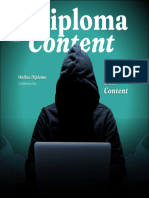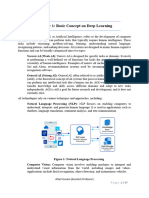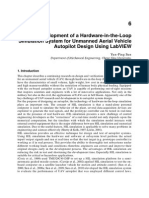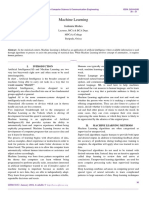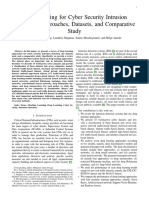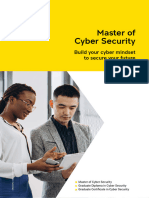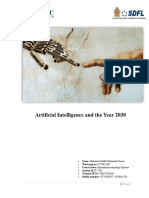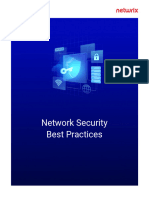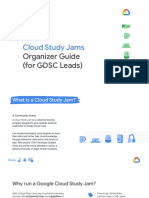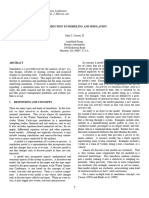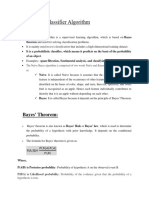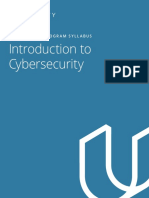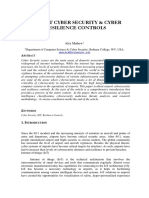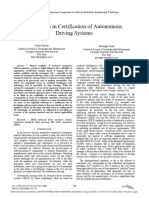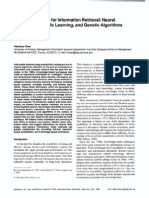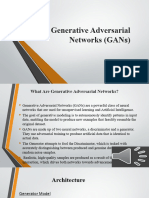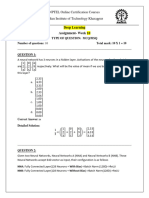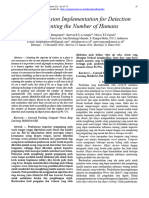MARITIME INTERNATIONAL CONFERENCE
AUTONOMOUS SHIP NAVIGATION METHODS: A REVIEW
Abraham Noel, Shreyanka K, Kaja Gowtham Satya Kumar.
AUTONOMOUS NAVIGATION PREREQUISITES FOR AUTONOMY DEEP LEARNING IN SHIP NAVIGATION
Autonomous navigation is achieved Large amount of data. Deep Learning Methods
by training or programming the ship Vivid algorithms infused to Deep learning, a subset of machine learning, utilizes a hierarchical level of
with the stored data about the vessel generate the working models. Algorithms Data artificial neural networks to carry out the process of machine learning.
behavior in various sailing Smooth functioning of learning
environment. techniques are used. Deep Neural Network:
A Deep neural network (DNN) is a complex neural network trains
DATA ENGINEERING several hidden layers within the network which provides better
performance with less parameters in each layer.
AUTONOMOUS SHIPS MARKET
AUTONOMOUS SHIPS - IMPACT
Schematic of Deep Neural Network.
Factors affecting quality of data Convolutional Neural Network:
Fuel consumption Human intervention Convolutional neural network (CNN) is designed to learn a set of
Peculiarly in the field of ship automation, considering the varied features from the input in a supervised training.
scenario under which ship is exposed to, the amount of data
engineered could escalate the so-called phenomenon ‘Big Data’.
MACHINE LEARNING
Efficiency Cost reduction
Machine Learning Methods:
Machine learning involves algorithm that evaluates and segregates data
and develops a logic.
Transfer Learning Active Neural Network
Safety
METHODS Convolutional Neural Network for Ship classification
Deep Convolutional Auto-Encoders:
Categories A deep convolutional auto encoder (DCAE) is proposed to remove
A flowchart showing working of
Transfer Learning Schematic of Artificial Neural Network features and conduct classification involuntarily and designed for high-
Classical Reactive Machine Deep resolution SAR image classification.
Methods Methods Learning Learning
Transfer learning solves the ANN takes intelligent decisions
Road Map Fuzzy Logic Transfer Deep Neural problem through a learning when they encounter similar
Building Controller Learning Network process - a neural network model, problems and can perform
Cell Neuro Artificial Neural convolutional from a set of structured data multiple jobs simultaneously.
Decomposition Fuzzy Network Neural Network history.
Artificial Ant Colony Active Deep
Potential Optimization Learning Convolutional
Field Auto-Encoders Active Learning Extreme Learning Machine
Neural Extreme Learning
Network Machine
Particle Swarm Incremental Schematic of Deep Convolutional Auto-Encoders.
Optimization Learning
Artificial Immune
Network
Feature
Learning
CONCLUSION
Genetic The machine learning algorithms are capable to accomplish intelligent
Schematic of Extreme Learning
Algorithm
A flowchart of Active Learning decisions; however, this algorithm may become more complicated for
Machine
unstructured data.
Extreme learning machine (ELM) The challenges can be handled by deep learning networks, where the
Active learning that interacts with
is a single hidden layer feed complex situation is solved through a multi-layer hierarchical approach.
the user or source to obtain the
DEEP LEARNING TRENDS IN AUTONOMOUS SHIPS desired outputs at new data
forward network which is
capable of training complex
points.
algorithms.
Deep learning
Performance
50 16
45
14
Incremental Learning Methods
40
Feature Learning Method
12
Number of publications
Older algorithms
Number of publications
35
30 10
25 8
20
15
6
4
Applying incremental learning to Feature learning is a collection
big data aims to produce faster of techniques that can
10
5 2
Amount of data
0 0
classification or forecasting times. automatically differentiate.
2003 - 06 2007 - 10 2011 - 14 2015 - 18 2003 - 06 2007 - 10 2011 - 14 2015 - 18
Year Year
Fig 1: Deep learning in Fig 2: Deep learning in Ship CONTACT INFORMATION
Autonomous Ship Navigation Collision Avoidance
35 9
Corresponding author’s name
8
30
7
Address Tel: +91 - 9641022225
25
Number of publications
Number of publications
20 5
15 4
Email(s):
3
10
2
5
1
0
2003 - 06 2007 - 10
Year
2011 - 14 2015 - 18
0
2007 - 10 2011 - 14
Year
2015 - 18
kaja.gowthamsatyakumar@gmail.com
Fig 3: Deep learning in Fig 4: Deep learning in Schematic of Incremental Learning abrahamnoel3099@gmail.com
Anomaly Detection Classification of Ships Schematic of Feature Learning krishanka2@gmail.com



